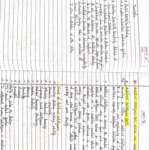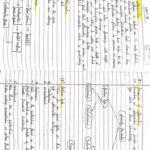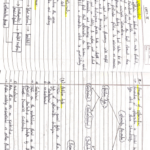SIZE SEPARATION
Presented by:
PRIYA TIWARI
Asst. Professor
Faculty of Pharmaceutical Sciences, Rama University Kanpur
Content
Size separation
Objectives of size separation
Official standard of powder
Sieve
Mechanism of size separation
Sieve shaker machine
Cyclone separator
Air separator
Elutriation tank
Bag filter
SIZE SEPARATION
Size separation is a unit operation that involves the separation of a mixture of various size
particles into two or more portions by means of screening surfaces. Size separation is also
known as sieving, sifting, screening. This technique is based on physical differences b/w
the particles such as size, shape and density.
OBJECTIVES / APPLICATION OF SIZE
SEPERATION
To determine particle size for the production of tablets and capsules.
To improve mixing of powders.
To improve the solubility and stability of particles during production.
To optimize feed rate, agitation, screening during production.
Quality control of raw materials.
Useful in production of tablets, capsules, suspension, emulsion, ophthalmic
preparations, ointments, creams, etc
OFFICIAL STANDARDS FOR POWDERS
The Indian Pharmacopoeia has laid down the standards for powders for pharmaceutical purposes. The
I.P. specifies five grades of powder which are as under :
COARSE POWDER- A powder of which al! the particles pass through a sieve with nominal
mesh aperture of 1.7 mm (No. 10 sieve) and not more than 40.0 per cent through a sieve with
nominal mesh aperture of 355 µm (No. 44 sieve) is called coarse powder.
MODERATELY COARSE POWDER- A powder of which all the particles pass through a sieve
with nominal mesh aperture of 710 µm (No. 22 sieve) and not more than 40.0 per cent through a
sieve with nominal mesh aperture of 250 µm (No. 60 sieve) is called moderately coarse powder.
MODERATELY FINE POWDER- If all the particles of a powder pass through a
sieve with nominal mesh aperture of 355 µm (No. 44 sieve) and not more than 40.0 per
cent through a sieve with nominal mesh aperture of 180 µm(No. 85 sieve), it falls in
this group.
FINE POWDER- In case all the particles pass through a sieve with a nominal mesh
aperture of 180 µm (No. 85 sieve), it is called fine powder,
VERY FINE POWDER – If all the particles of the powder pass through a sieve with a
nominal mesh aperture of 125 µm (No. 120sieve), it is said to be very fine powder.
SIEVES
Sieves are constructed from wire cloth with square meshes, woven from wires of brass,
bronze, stainless steel or any other suitable material. The wires should be of uniform
circular cross-section and should not be coated or plated. There should not be any reaction
between the material of the sieve and the substance which is being sifted from it.
Standards for sieves used to testing must specify the following:
Number of sieve : Sieve number indicates the number of meshes in a length of 2.54 cm
in each transverse direction parallel to the wires.
Nominal size of aperture : Nominal size of aperture indicates the distance between the
wires. It represents the length of the side of the square aperture. The I.P. has given the
nominal mesh aperture size for majority of sieves in mm or in cm.
Nominal size of sieves
aperture
Nominal diameter of the wire : Wire mesh sieves are made from the wire having the
specified diameter in order to give a suitable aperture size and sufficient strength to
avoid distortion of the sieve.
Approximate percentage sieving area : This standard expresses the area of the
meshes a percentage of the total area of the sieve. It depends on the size of the wire
used for any particular sieve number. Generally the sieving area is kept within the range
of 35 to 40 percent in order to give suitable strength to the sieve.
Tolerance average aperture size : Some variation in the aperture size is unavoidable
and when this variation is expressed as a percentage, it is known as the ‘aperture
tolerance average’.
MECHANISM OF SIZE SEPERATION
The working of mechanical sieving devices are based on any of the following methods.
Agitation
Brushing
Centrifugal
Agitation methods- Sieves may be agitated in a number of different ways, such as:
Oscillation : This sieve is mounted in a frame that oscillates back and forth. It is a
simple method but the material may roll on the surface of the sieve.
Vibration : The sieve is vibrated at high speed by means of an electric device. The rapid
vibration is imparted to the particles on the sieve which helps to pass the powdered
material through it.
Gyration : In this method, a system is made so that sieve is on rubber mounting and
connected to an eccentric fly wheel. This gives a rotary movement of small amplitude
to sieve which turn gives spinning motion to the particles that helps to pass them
through a sieve.
Agitation methods are not continuous methods’ but can be made so by inclination of the
sieve and the provision of separate outlets for undersize and oversize particles.
Brushing methods- In this case, a brush is used to move the particles on the surface of
the sieve and to keep the meshes clear. The brush is rotated in the middle in the case of
a circular sieve but spiral brush is rotated on the longitudinal axis in case Of a
horizontal cylindrical sieve.
Centrifugal methods- In this method, a high speed rotor is fixed inside the vertical
cylindrical sieve, so that on rotation of rotor the particles are thrown outwards by
centrifugal force. The current of air which is produced due to high speed of rotor helps
in sieving the powder.
SIEVING METHOD
In this method, the fine powder is separated from the coarse powder by using sieves of
desired number. The degree of fineness of a powder is known with the help of sieve
through which the powdered material is passed. Sieves are numbered in order to
distinguish from each other.
Working & construction
Size separation of powder is done by passing the powdered material through a set of
sieves. Sieves are arranged in descending order i.e. sieve of larger size is at the top and
the smallest one at the bottom. The bottom sieve is attached to the receiving pan. The
material is placed in the uppermost sieve. The sieves are shaken with the help of
mechanical sieve shaker or electromagnetic devices. It helps the particles to pass
through the sieves
Sieve shaker machine
Advantages-
inexpensive
Easy to use
Disadvantages –
Chance of clogging of sieve if powder is not properly dry
During shaking, attrition may occur.
CYCLONE SEPARATOR
Principle
In cyclone separator, the centrifugal force is used to separate solids from fluids. The
separation depends not only on the particle size but also on density of particles. Hence
depending on the fluid velocity, the cyclone separator can be used to separate all types
of particles or to remove only coarse particles and allow fine particles to be carried
through with the fluid.
Construction
It consists of a cylindrical vessel with a conical base. In the upper part of the vessel is
fitted with a tangential inlet and a fluid outlet and at the base it is fitted with solid
outlet.
Working
The suspension of a solid in gas (usually air) is introduced tangentially at a very high
velocity, so that rotary movement takes place within the vessel. The fluid is removed
from a central outlet at the top. The rotatory flow within the cyclone separator causes
the particles to be acted on by centrifugal force. The solids are thrown out to the walls,
thereafter it falls to the conical base and discharged out through solids outlet.
Uses
Cyclone separators are used to separate the suspension of a solid in a gas (air).
It can be used with liquid suspensions of solids
Cyclone separator
AIR SEPARATOR
Principle
It works on the same principle as that of cyclone separator. But in this case the air
movement is obtained by means of rotating disc and blades. To improve the separation,
the stationary blades are used. By controlling these blades and the speed of rotation, it is
possible to vary the size at which separation occurs.
Construction
It consists of a cylindrical vessel with a conical base. In the upper part of the separator
the vessel is fitted with feed inlet, and at the base there are two outlets, one for light
particles and other for heavy particles. The rotating disc and rotating blades are attached
to the central shaft, to produce air movement
Working
the sample powder is passed through the feed inlet, which falls on the rotating disc.
The rotating blades are attached to the same shaft. These produce a current of air as
shown by the arrows. The fine particles are picked up and are carried into space, where
air velocity is sufficiently reduced. The fine particles are dropped and ultimately
collected at an outlet meant for fine particles. The heavy particles which fall downward
are removed at an outlet meant for heavy particles.
Uses
Air separator is often attached to the ball mill or hammer mill to separate and return
oversized particles for further size reduction
Air separator
ELUTRIATION METHOD
The size separation of powder is based on the low density of fine particles and high
density of the coarse particles. Elutriating tank is used to separate the coarse and fine
particles of powder after levigation.
Working
The dry powder or paste made by levigation process is kept in an elutriating tank and
mixed with a large quantity of water.
The solid particles are uniformly distributed in the liquid by stirring and then it is
allowed to settle down. Depending on the density of solid particles, it will either settle
down or remain suspended in water.
The sample is withdrawn at different heights through the outlets. These are dried and
thus the powder with various size fractions are collected
Nowadays in elutriation process, the particles are suspended in a moving fluid,
generally water or air. The apparatus consists of a vertical column with an inlet near the
bottom for suspension, an outlet at the base for coarse particles and an overflow near
the top for fluid and fine articles. One column will give single separation into two
fractions. If more than one fraction is required a number of tubes of increasing area of
cross section can be connected in series. The velocity of the fluid decreases in
succeeding tubes as the area of cross section increases, thus giving a number of
fractions. These fractions are separated and dried.
Advantages
The process is continuous.
Depending on the number of fractions required, the same number of tubes of different
area of cross section can be connected.
The separation is quick as compare to other methods of separation.
The apparatus is more compact than as that used in sedimentation methods.
Disadvantage
The suspension of solid particles has to be diluted which may not be desired in certain
cases.
Fig. elutriation tank
BAG FILTER
Size separation of fine dust from the milled powder is achieved in 2 steps
In 1st step, the milled powder is passed through a bag filter (cloth) by applying the
suction on the opposite side of feed entry
In the 2nd step pressure is applied in order to shake the bags so that powder adhering to
bags falls off, which is collected from the conical base
Construction:
It consist of number of bags made of cotton or wool fabric. These are suspended in a
sheet metal container. A bell crank lever arrangement is made to bring the filter to
normal atmospheric condition.
Working:
Step I-Feed is separated from air by passing it through the cloth bags
Step II-Bags are shaken to collect the fines that are adhered to the bags
These 2 steps are subsequent and are controlled at different interval with the help of bell
crank lever arrangement.
Filtering period-: The exhaust fan positioned at the top keeps the bags under less
pressure than atmospheric pressure. The gas containing fine particles or dust enters the
hopper and passes up. The gas feed passes through the fabric of bag. During this
process, the fines are retained in the bags, while gas reaches the top of the casing.
Because of air the bag remains taut during filtration operation.
Shaking period-: Since vacuum is cut off in the chamber, air from outside enters the
casing and passes through the bags. This result in violent shaking of the bags, so that
the dust and fine particles are displaced from the bags and falls into the conical base.
Uses
Bag filters are used along with other size separation equipment e,g cyclone separator It
is connected to the fluidized energy mill to discharge end.
Fig. Bag filter










